
Need Help Taking Care of Your Air Plants? We’ve Got Just the Guy
In the courtyard of his California studio, “Airplantman” Josh Rosen works amid a botanical wonderland filled with hand-strung Tillandsia lanterns, custom air plant frames, and “gallery walls.”
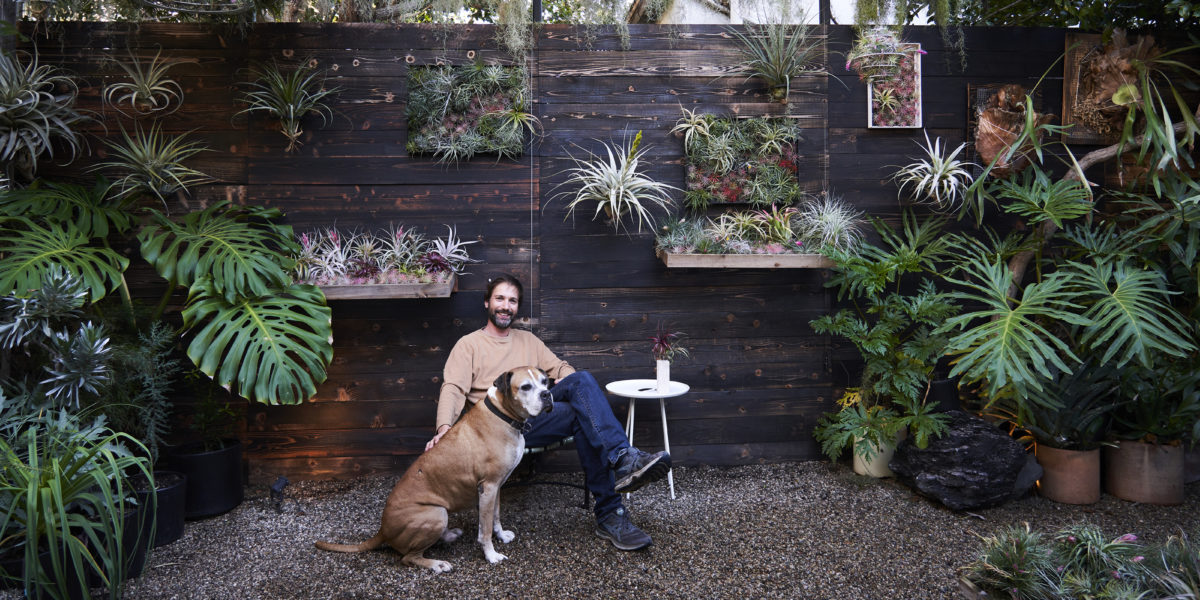
Josh Rosen has the calm demeanor of a young, hip monk. When I enter his garden studio in Mar Vista, California, he greets me with blue eyes that are calm and clear and a gentle smile under a beard well-trimmed. He offers tea or water, then a comfortable but stylishly vintage chair so we can talk. Once seated, his sweet boxer/pit bull mix, Elliot, comes up for some pets, and I can immediately feel my pulse start to quiet—no small feat considering the traffic I’d just faced on the 405.
As I marvel at how zen I feel in Rosen’s presence, I wonder if it’s because he was a philosophy major at Northwestern University, but I soon conclude it must be the air plants. After all, Rosen is known, like some kind of a botanical rock star, by the moniker “Airplantman,” and we’re surrounded by so many Tillandsia that they look like his green-haired groupies.
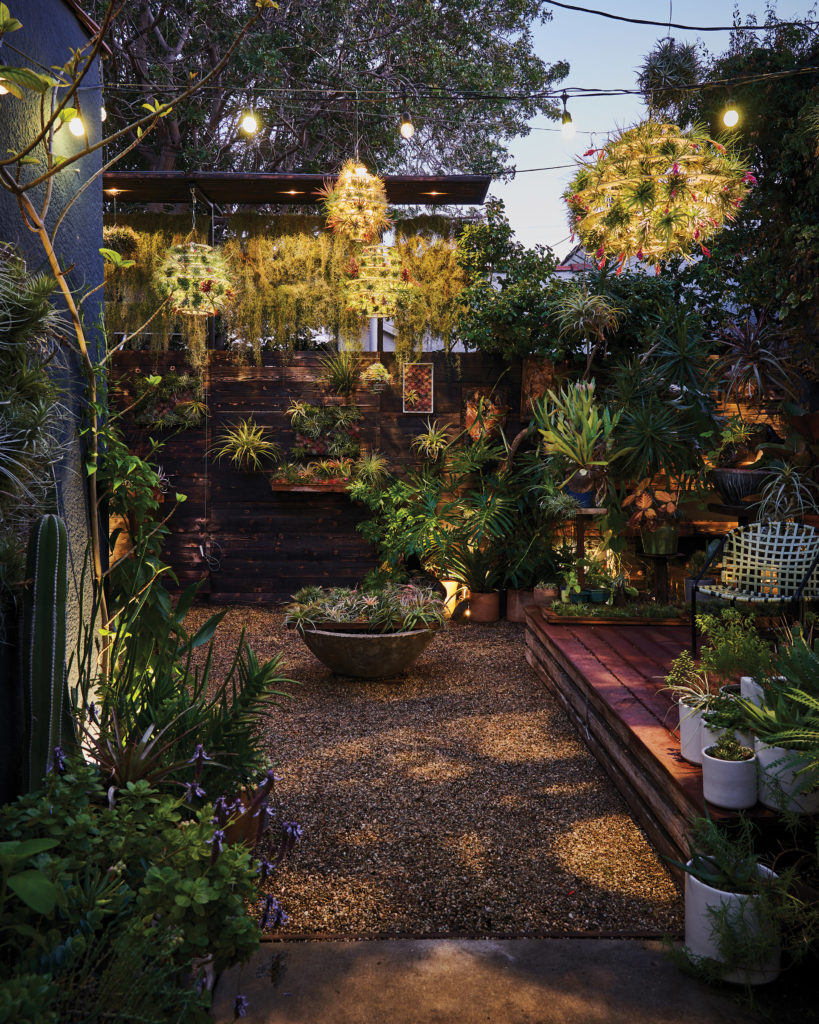
Thomas J. Story
To my left, a large Tillandsia latifolia spills out of a hoop, while just behind Rosen’s head, a cluster of Tillandsia aeranthos ‘Minuette’ dances from a simple wire. Nearby, a small Tillandsia crocata boasts a single, fragrant bloom, and Tillandsia ionantha and Tillandsia stricta strike poses in his “Airplantman” lanterns, which have misters inside that give them an almost science-fiction-like glow.
Perhaps it’s no surprise, then, that one of the lanterns was recently used on a set for the Paramount+ series Star Trek: Picard. “They wanted a courtyard to look futuristic,” Rosen says, “so I took that as a compliment.”

Thomas J. Story
With over 100 air plant species in his backyard alone, Rosen is a natural-born collector, and when he clapped eyes on his first air plant at a nursery in Hawaii, to say he was love struck is an understatement. “Air plants are so charismatic,” Rosen says. “They’ve got these weird shapes, and they look like aliens from another planet. I was like, ‘I need to get as many of these as I can.’”
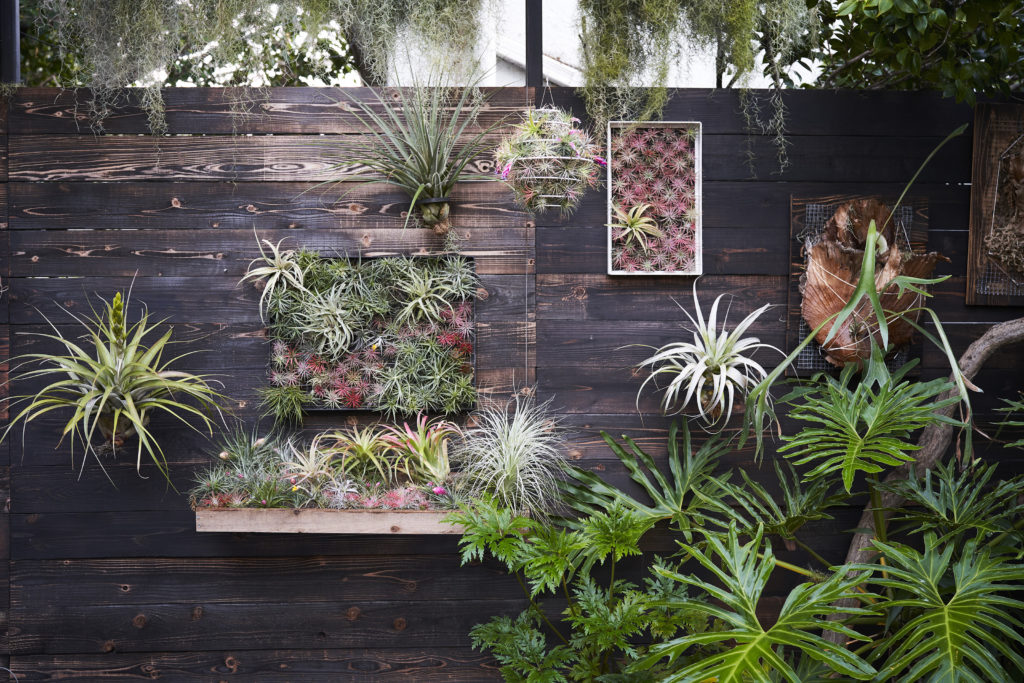
Thomas J. Story
Once Rosen moved to Los Angeles to become a landscape architect (his firm is called Studio Grey Green), he found he had to justify how many air plants he had so he started a business. Nine years later, he now does custom installations for businesses like the London Hotel, Quicksilver, and Starbucks, while residents in L.A. and as far away as Singapore hire him to create living air plant walls.
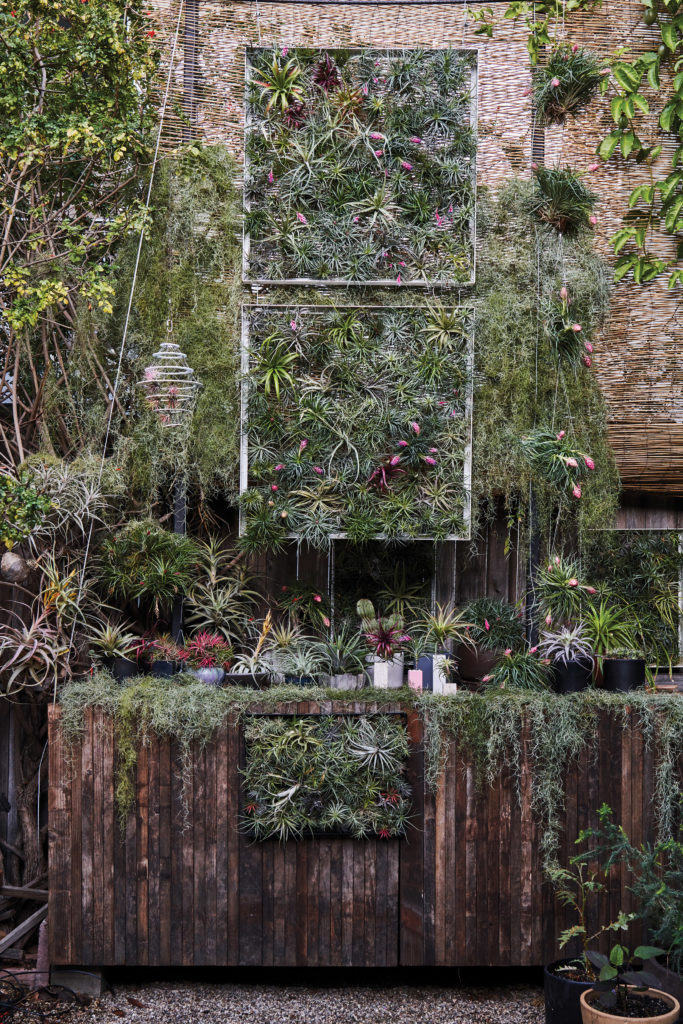
Thomas J. Story
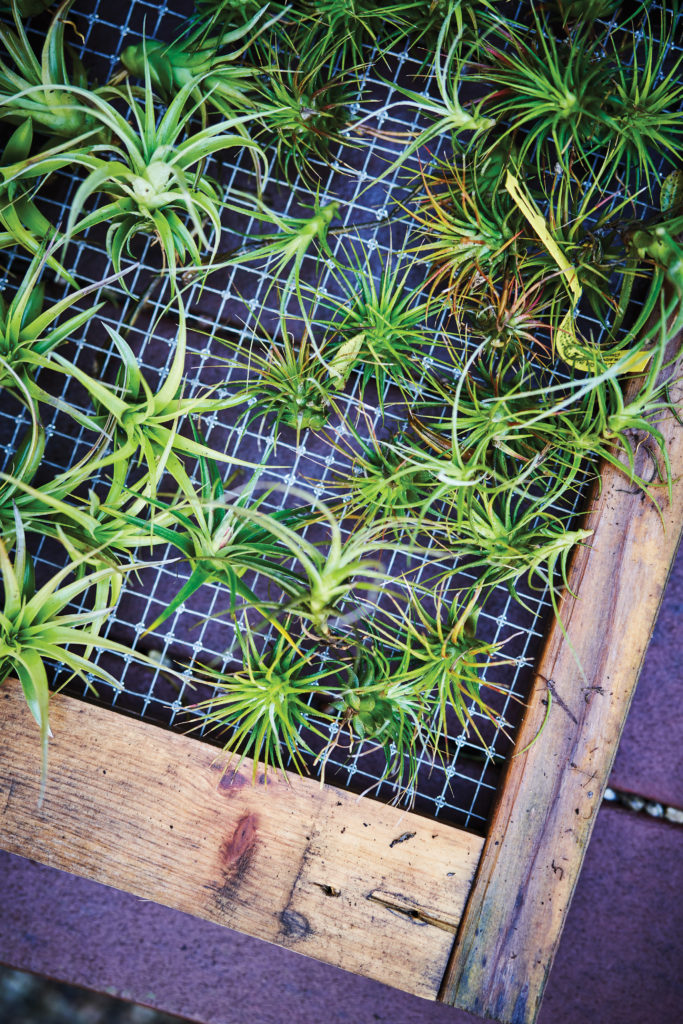
Thomas J. Story
While we discuss the fantastical appeal of air plants, which by their very name at least seem to survive on thin air alone, I’m reminded of this quote from The Secret Garden by Frances Hodgson Burnett: “Magic is always pushing and drawing and making things out of nothing. Everything is made out of magic, leaves and trees, flowers and birds, badgers and foxes and squirrels and people. So it must be all around us. In this garden—in all the places.”
I mention the quote to Rosen, and he allows that The Secret Garden is, in fact, a favorite book, and the passage apt. “I love [the magical quality of] air plants—their wild, waving arms, their stunning variety,” he says. “Losing yourself in creativity, especially in collaboration with plants, brings a powerful sense of magic.
“Air plants have a likeness to us, too,” he adds. “Particularly due to their refusal to be earthbound. They really do look like they could get up and walk away.”
But I have a confession to make: I struggle to keep these little buggers alive. Fortunately, Rosen agrees to act as my own personal support group. “Talking people through what went wrong is a good way to learn,” he says. Read on for his care and maintenance tips.
Air Plant Care 101
Air plants are native to the Americas and use their roots to anchor themselves to trees, rocks, and even cacti thorns—without being parasitic. But despite the fact that they’re called air plants, they do need water and nutrients, which are absorbed via special scales on their leaves called trichomes.
Here are Josh Rosen’s top tips to keep them alive:
- Air plants thrive outdoors, but if you want to keep them inside, make sure they have bright, indirect light.
- Keep in mind that Tillandsia with gray leaves are more sun- and desert-adapted, while the ones with greener, wider leaves are more shade-adapted.
- Rather than misting, give them a six- to 12-hour soak once a week. “I’ve hardened mine off with tap water, but ideally, you’d use filtered but not distilled water,” Rosen says.
- After, make sure they have enough air circulation to dry completely.
- If you, like me, find your air plant turns yellow and falls to pieces after a deep soak, it’s because it was already unhappy. “A shorter soak would have been better to revive it,” Rosen says.
- Open a window—air plants love fresh air.
- Don’t handle your air plants too much; the trichomes can react to the oils in your skin.
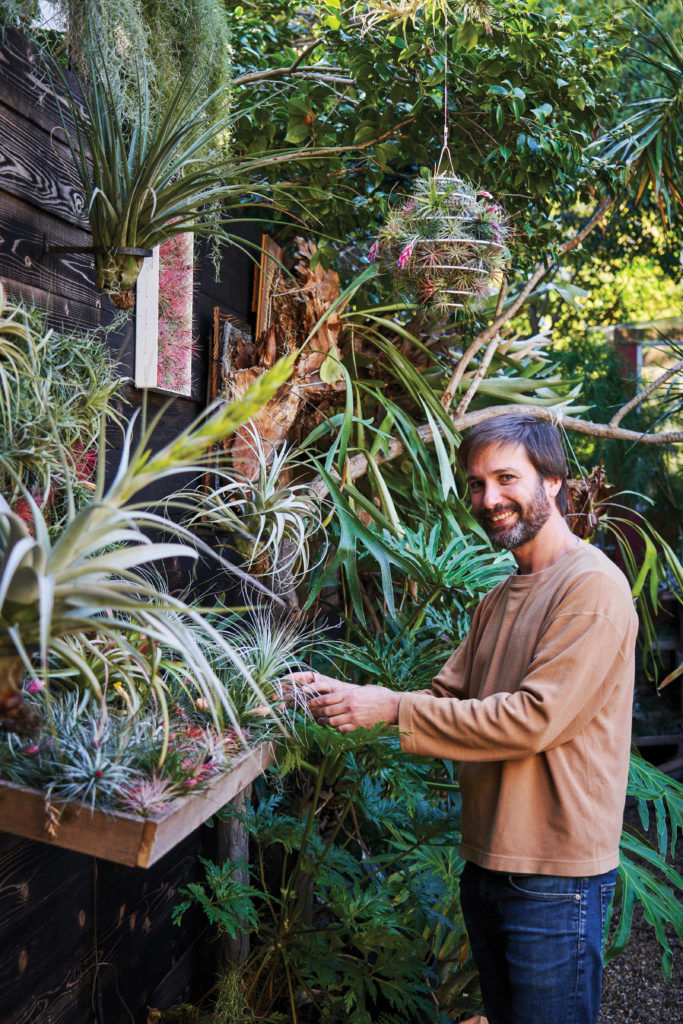
Thomas J. Story
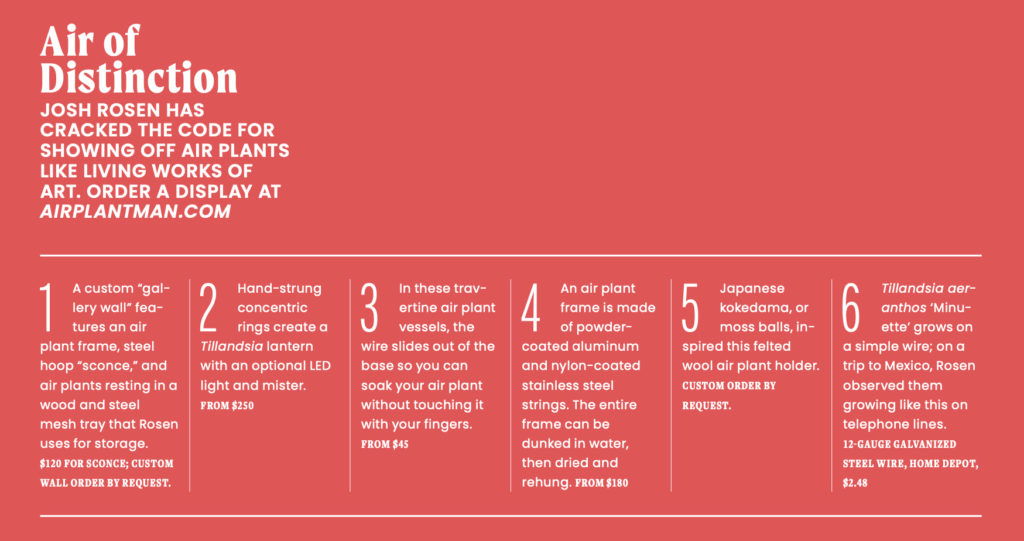
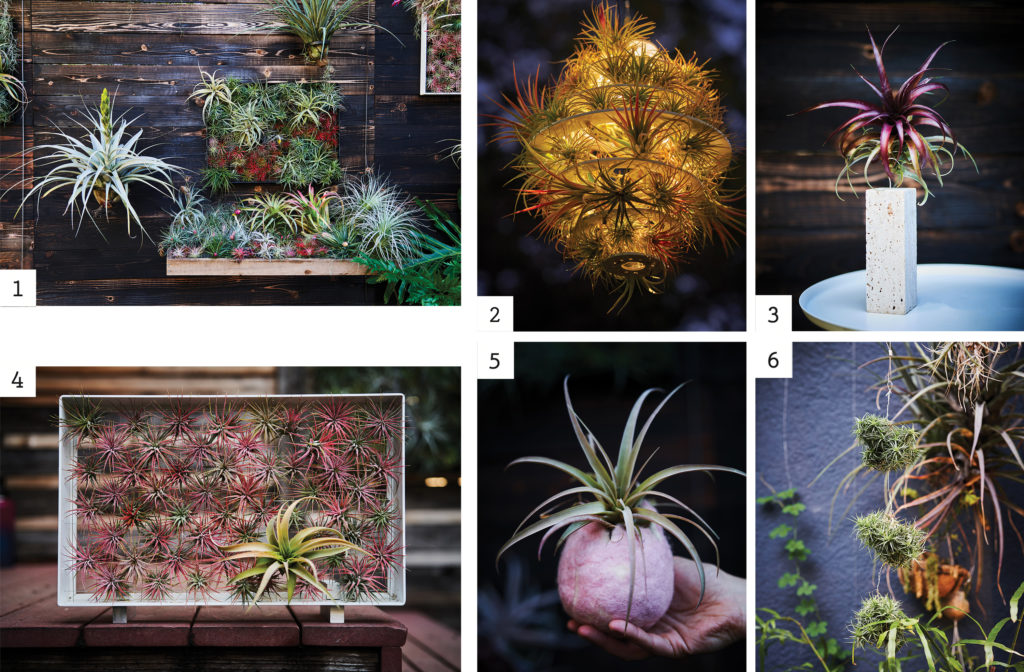
Thomas J. Story
Read the Current Issue Here!
Get one year of Sunset—and all kinds of bonuses—for just $24.95. Subscribe now!
